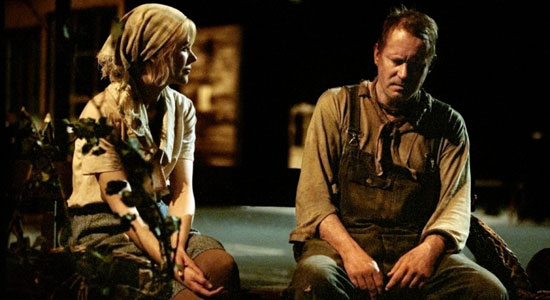 On his 10th studio album, Temple Beautiful (Yep Roc), Chuck Prophet found his muse in the city he’s called home for 30 years. Exploring the local landmarks and myths with friend and poet klipschutz, Prophet winds his way through San Francisco, stretching tales even taller along the way. But this guided tour isn’t a detailed and prefabricated concept album, so much as it’s the product of spontaneous inspiration, and it’s not a document of the city’s past as much as it is of its present. Prophet will be guest editing magnetmagazine.com all week. Read our new Q&A with him.
On his 10th studio album, Temple Beautiful (Yep Roc), Chuck Prophet found his muse in the city he’s called home for 30 years. Exploring the local landmarks and myths with friend and poet klipschutz, Prophet winds his way through San Francisco, stretching tales even taller along the way. But this guided tour isn’t a detailed and prefabricated concept album, so much as it’s the product of spontaneous inspiration, and it’s not a document of the city’s past as much as it is of its present. Prophet will be guest editing magnetmagazine.com all week. Read our new Q&A with him.

Prophet: One of the perks of living in a high-rent city like San Francisco is the movies. For a while there we probably had more art houses per capita than anywhere. Like everything else, of course, that’s all changed. The single-screen theater is an endangered species. (Hell, they’ve even closed almost every bowling alley in town.)
I loved this weird Lars von Trier film Dogville, and I’m still thinking about it. We saw it at the Balboa Theater, out by the beach, which despite the Revenge of the Multiplexes is still hanging in there. Its owner is Gary Meyer, a founder of Landmark Theatres and co-director of the Telluride Film Festival, and he’s not going down without a fight.
Dogville is really a play. The set is a town made up of chalk markings on a black stage. I wouldn’t call it a little movie. At three hours plus, it’s kind of out there. Sometimes movies are boring. And that’s all part of it. The boring part sets you up for the wild phantom left hook.
I like it when it all comes together: the song, the singer, the words, the music, the magnet and the steel, and the sound.
I like all kinds of movies. But more and more I like ones where I don’t know what’s going to happen next. It’s that simple, I guess. I just appreciate a well-placed left hook, aimed my way, but still confined to the screen!
Why von Trier hates the U.S. so much is another issue entirely. Maybe he hasn’t listened to enough Chuck Berry. Oh well.
At the end of Dogville, which takes place during the Great Depression, it makes a sharp left turn into a photo montage from Jacob Holdt’s “American Pictures” over the music of Bowie’s “Young Americans.”
Video after the jump.







2 replies on “From The Desk Of Chuck Prophet: The Balboa Theater And “Dogville””
How cool is that? A movie theater near the beach! And you got to meet the founder of Landmark Theaters. We have two here in the DC area – one on Bethesda Row and one on E Street. I would like to see that chain expand. I saw “The Artist” there last week and “My Week with Marilyn” and I was not disappointed. “Dogville.” Well, I like the title.
I saw the tweet and decided to look at the end credits to “Dogville” on youtube. I had not done this February 10 before commenting. These film credits should win an Oscar. Each scene should win an Oscars. The film editor have won an Oscar. Someone had to go through all of those photographs and choose which ones to use. How do you say choose one person’s suffering over the other? What about those who photograph suffering? I have a hard time ethically with someone who remains detached for the sake of recording and preservation of history. However, if not for these photographs, we would never know that such sufferings exist. These people’s lives therefore were not in vain. My life will be if I do nothing.